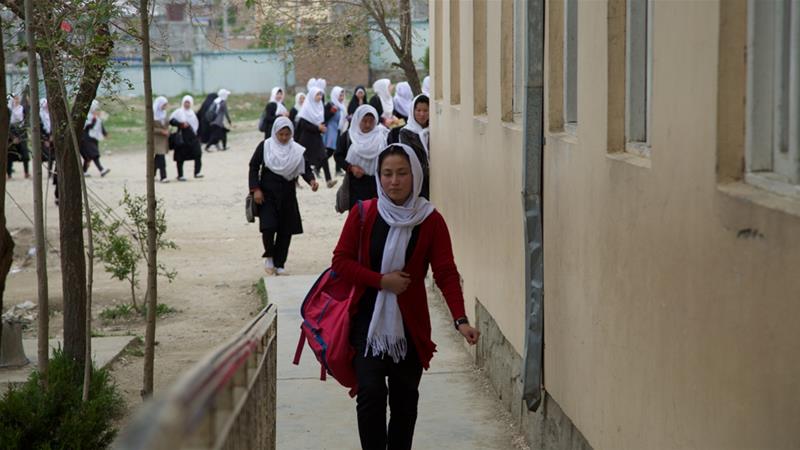
“See, this is our school. You can see where the girls are.”
Sixteen-year-old Mahnoz Aliyar is one of the 14,000 students of Kabul’s Sayedul Shohada school. The road leading up to the school gate is not paved and potholes full of muddy water make it difficult to navigate. Conditions are little better inside the gates.
Mahnoz points to a big open field.
“You see? We don’t have any classrooms, we don’t have any buildings, and we don’t have enough facilities for the girls.”
Some classes are held under makeshift tents; others are held out in the open, with nothing to buffer the girls from the elements of Afghanistan’s punishing summers and bitter winters.
While the girls persevere through rain, hail or shine, boys attend classes inside several buildings on the school grounds.
Still, the fact that girls are attending school is a huge improvement from the days of Taliban rule, when girls and women were banned from getting an education.
Thanks largely to the efforts of international donors who have spent billions of dollars rebuilding the Afghan education system, millions of girls have returned to school since the Taliban fell in 2001.
However, their exact numbers are unknown.
 |
| Girls at Kabul’s Sayedul Shahada school study outdoors because the buildings are reserved for boys [Max Walker/Al Jazeera] |
‘He was saying that school is not good for girls’
A 2017 World Bank report suggests that as many as 66 percent of Afghanistan’s girls are not in school. And those who are enrolled still struggle to get an education. They have to fight against a society that has long discouraged them, a corrupt system and a lack of proper facilities that disadvantages them.
Mahnoz has been a student at Sayedul Shohada since the first grade. She’s now in grade 11 and hopes to attend the American University in Kabul after she graduates next year.
I want to learn there. After that, I want to get a job. After that, I plan to go into politics. I want to go into politics and I want to supply everything for the girls. That’s my wish.”
But it will take more than her own fierce determination if Mahnoz is to achieve her goals.
First, she needs her country to be stable. According to a recent Human Rights Watchreport, instability is one of the main reasons why so many girls are out of school. Families are less likely to send girls to school in insecure conditions than boys.
Even in the relative security of their neighbourhood, the Dascht-e-Barchi district of west Kabul, Mahnoz’s father, Allahdad, says he worries about Mahnoz and her younger sister every day when they make the half-hour walk to school. He has reason to be worried – a recent bomb blast just two kilometres from their school killed 60 people.
I want to learn there. After that, I want to get a job. After that, I plan to go into politics. I want to go into politics and I want to supply everything for the girls.
MAHNOZ ALIYAR, STUDENT
In addition to safety concerns, cultural norms still dictate many girls’ lives.
Allahdad was at first reluctant to allow Mahnoz to go to school. But she’s managed to convince him otherwise.
“Before he was saying … that school is not good for girls,” she recalls. “And the girls should work in the home, cleaning, washing, these things. But right now, he is OK. I am always saying to him the world has changed. And we should learn knowledge, we should go to school.”
 |
| Mahnoz’s father, Allahdad, at his shop in West Kabul. First reluctant, he now wants Mahnoz to study medicine at university, but she is more interested in politics [Max Walker/Al Jazeera] |
Bribing their way into teaching jobs
If the struggle to get to school is one hurdle, girls face even more obstacles once they are enrolled.
An independent review of corruption in the education system revealed that the poor quality of education leads many parents to pull their daughters out of school.

